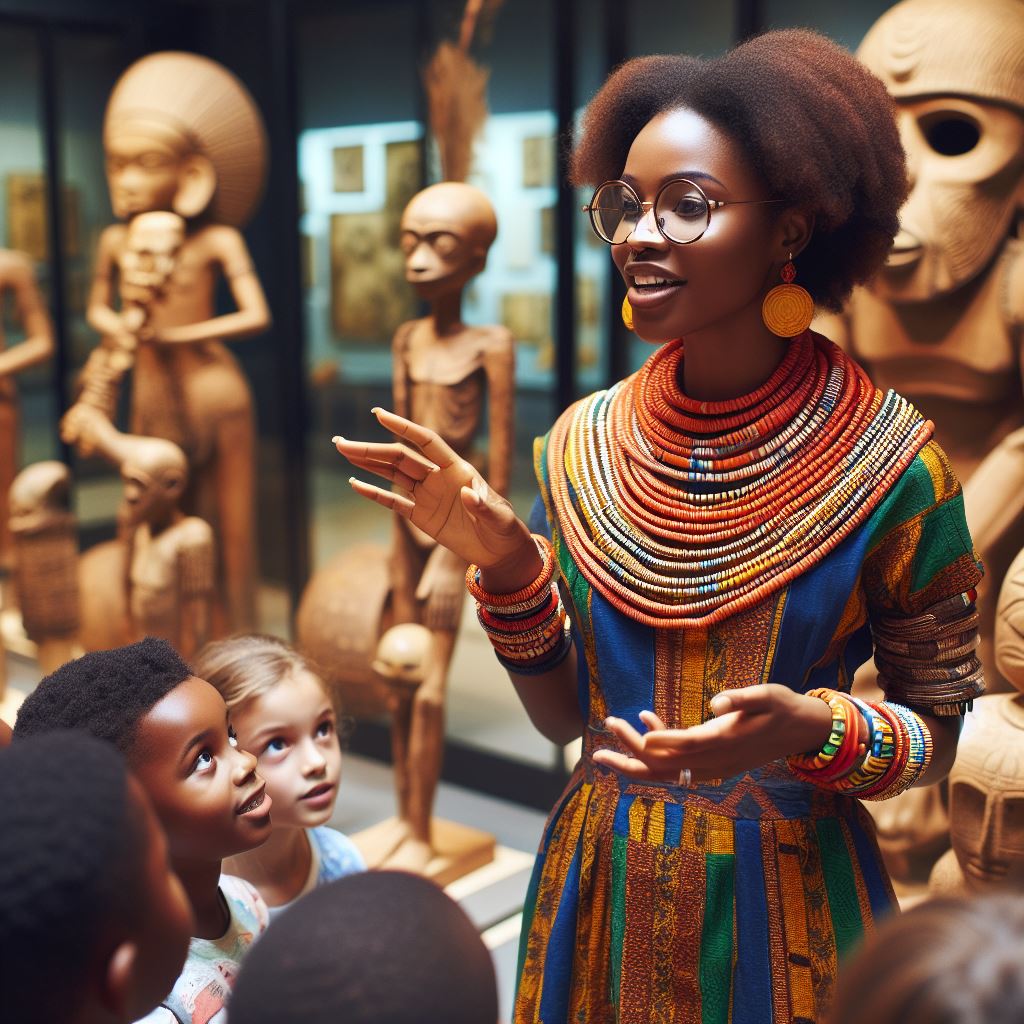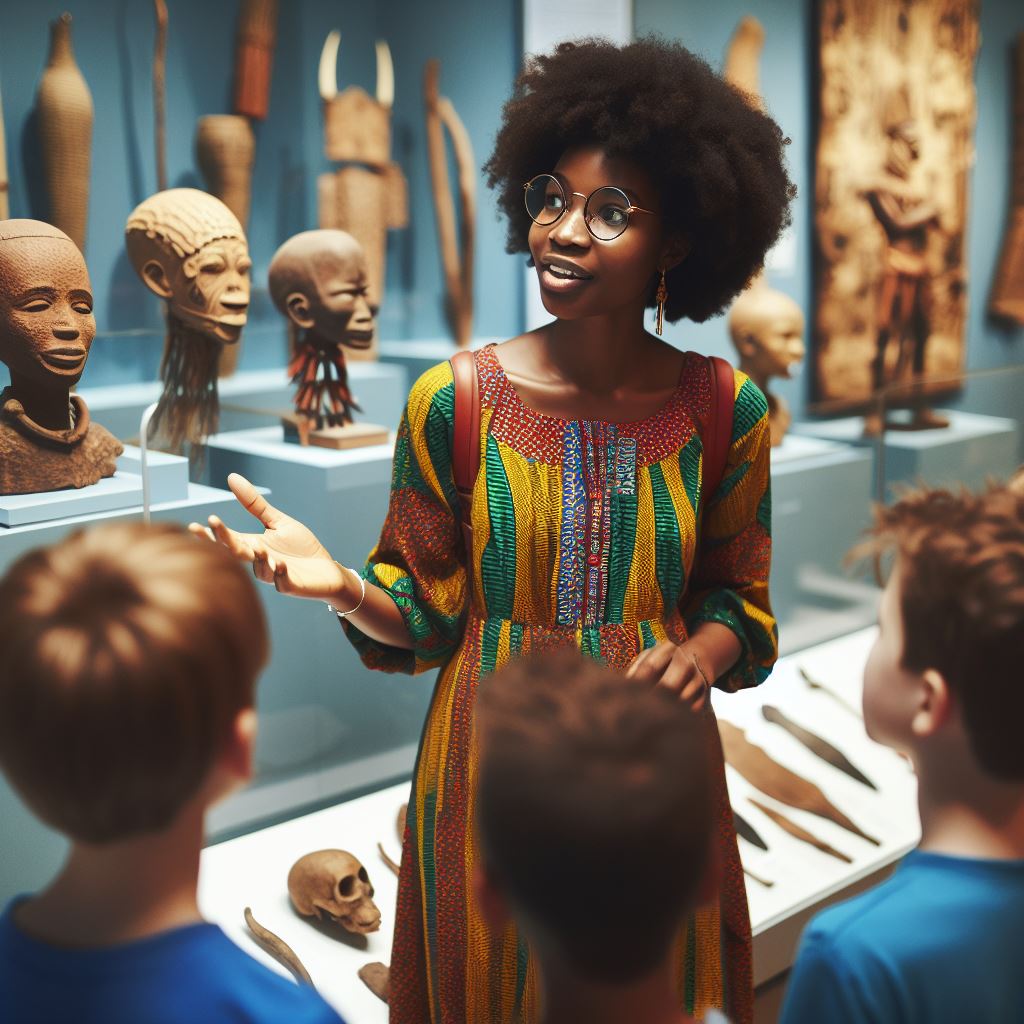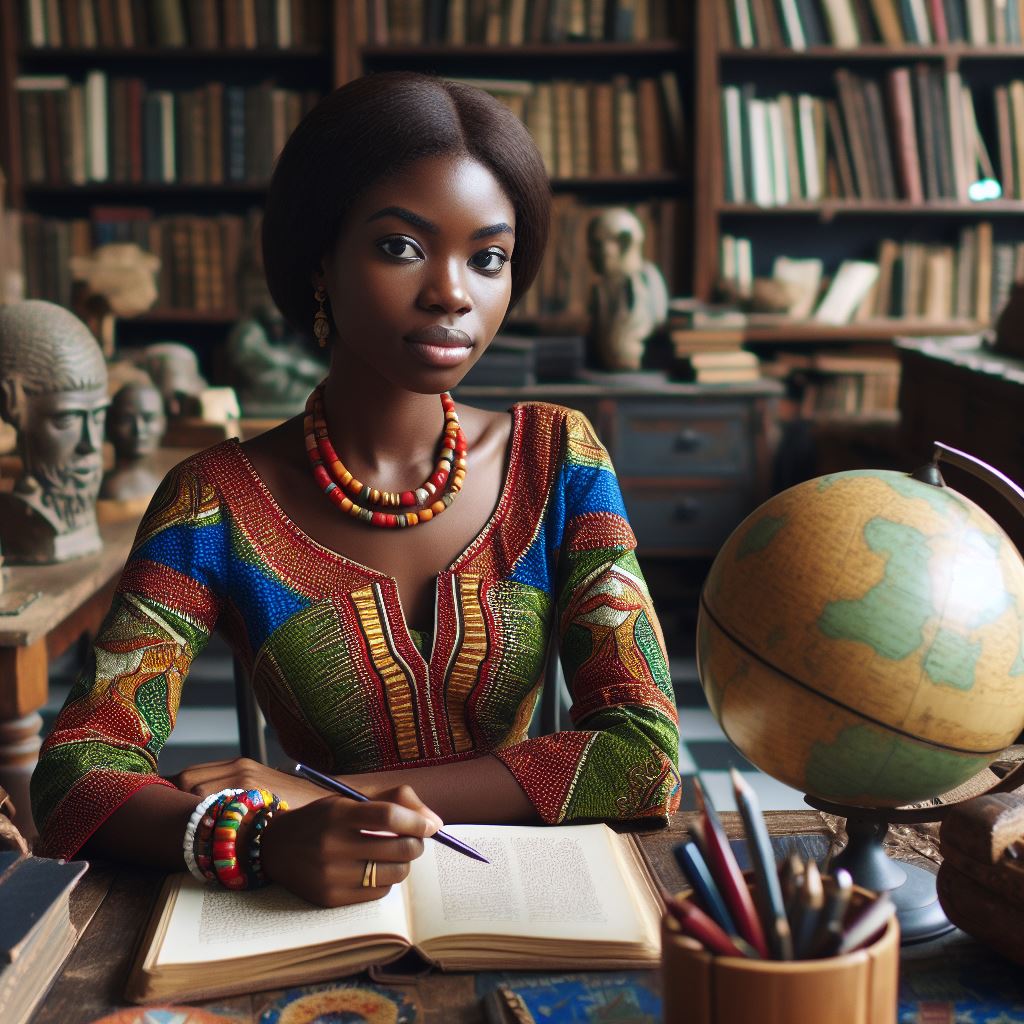Introduction
Welcome to the realm where creativity meets craftsmanship—the world of essential skills for aspiring Nigerian fashion designers.
In this section, we delve into the fundamental abilities that lay the foundation for a successful career in the dynamic realm of fashion.
Understanding and mastering these skills are essential steps for aspiring designers to carve their niche and make a mark in the vibrant Nigerian fashion industry.
From sketching and sewing to trend forecasting and business acumen, each skill plays a crucial role in shaping a designer’s journey toward success.
With Nigeria’s fashion landscape continually evolving, the importance of acquiring these skills cannot be overstated.
They serve as the building blocks upon which aspiring designers can construct their dreams and transform them into tangible realities.
Join us as we explore these essential skills in depth, uncovering the secrets to unlocking creativity, innovation, and entrepreneurial success in Nigerian fashion.
Knowledge of Fashion Trends
Significance of Staying Updated on Current Fashion Trends
Staying updated on current fashion trends is not merely a luxury but a necessity for aspiring Nigerian fashion designers. In the fast-paced world of fashion, trends come and go at lightning speed, influencing consumer preferences, shaping industry dynamics, and dictating design directions.
Fashion trends are more than just fleeting fads; they are powerful indicators of societal shifts, cultural influences, and consumer behavior.
By staying abreast of these trends, designers gain valuable insights into market demand, enabling them to create designs that resonate with their target audience.
Moreover, in an industry as competitive as fashion, staying ahead of the curve can mean the difference between success and obscurity.
Designers who are attuned to current trends can position themselves as trendsetters and innovators, garnering attention and admiration from consumers and industry insiders alike.
Tips on How to Research and Incorporate Trends into Designs
Researching and incorporating trends into designs requires a multifaceted approach, drawing from various sources and techniques:
- Fashion Magazines and Publications: Fashion magazines remain a timeless source of inspiration and trend insight. Designers should regularly peruse fashion publications to glean insights into the latest trends, emerging designers, and industry news.
- Digital Platforms and Social Media: In today’s digital age, social media platforms like Instagram, Pinterest, and TikTok serve as invaluable resources for trend research. Designers can follow fashion influencers, brands, and trend forecasters to stay updated on the latest developments and discover new trends.
- Trend Forecasting Reports: Trend forecasting agencies and consultancy firms offer comprehensive reports and analyses of upcoming trends. Subscribing to these services provides designers with expert insights and predictions, guiding their design decisions.
- Fashion Events and Industry Seminars: Fashion weeks, trade shows, and industry seminars provide designers with opportunities to immerse themselves in the latest trends and network with industry professionals. Attending these events offers firsthand exposure to emerging trends and fosters collaboration and idea exchange.
When incorporating trends into designs, designers should approach the process with creativity, authenticity, and strategic intent:
- Maintain Brand Identity: While it’s essential to stay current with trends, designers must ensure that trend integration aligns with their brand’s identity and values. Striking a balance between trendiness and brand consistency is key to maintaining authenticity and resonance with consumers.
- Blend Trends Thoughtfully: Rather than blindly following trends, designers should aim to reinterpret and personalize trends in a way that feels fresh and unique to their brand. Experimenting with combinations of trends and incorporating unexpected elements can result in designs that stand out and capture attention.
- Consider Target Audience: Understanding the preferences, lifestyles, and aspirations of their target demographic is crucial for designers seeking to incorporate trends effectively. By tailoring trend integration to the needs and desires of their audience, designers can create designs that resonate and connect on a deeper level.
- Stay Balanced: While trends can provide inspiration and direction, designers should avoid becoming overly reliant on trends at the expense of creativity and originality. Striving for a balanced approach to trend incorporation ensures that designs remain innovative, timeless, and true to the designer’s vision.
By following these tips and approaches, aspiring Nigerian fashion designers can navigate the ever-changing landscape of fashion trends with confidence and creativity, creating designs that captivate audiences, drive sales, and leave a lasting impression in the industry.
Read: How to Apply for Communication Arts Programs
Sewing and Tailoring Skills
The Importance of Mastering Basic Sewing and Tailoring Techniques
In the vibrant realm of Nigerian fashion design, mastering basic sewing and tailoring techniques is paramount.
These skills form the backbone of garment construction, allowing designers to transform their creative visions into tangible pieces.
Without a solid foundation in sewing and tailoring, designers may struggle to execute their ideas effectively.
Proficiency in sewing ensures that garments are not only aesthetically pleasing but also structurally sound.
Similarly, mastery of tailoring techniques enables designers to create custom-fit garments that flatter diverse body shapes and sizes.
Moreover, in Nigeria’s bustling fashion industry, where craftsmanship and attention to detail are highly valued, the ability to sew and tailor with precision sets designers apart.
Recommend Resources or Training Programs for Improving Sewing Skills
For aspiring Nigerian fashion designers seeking to enhance their sewing and tailoring skills, numerous resources and training programs are available:
- Online Sewing Courses: Platforms such as Udemy, Skillshare, and Coursera offer a plethora of online courses covering everything from basic sewing techniques to advanced garment construction.
- Local Sewing Workshops: Look for sewing workshops or classes offered by community centers, fashion schools, or experienced tailors in your area. These hands-on sessions provide invaluable practical experience and guidance.
- Sewing Books and Guides: Invest in sewing books authored by industry experts, which provide detailed instructions, tips, and illustrations to help you master sewing techniques at your own pace.
- Apprenticeships: Seek apprenticeship opportunities with established fashion designers or tailors. Apprenticeships offer invaluable hands-on experience and mentorship, allowing you to learn directly from seasoned professionals.
- Sewing Clubs or Meetups: Join sewing clubs or attend sewing meetups in your community to connect, share knowledge, and learn new techniques collaboratively.
By immersing yourself in these resources and dedicating time to practice and refine your skills, you can significantly improve your sewing and tailoring abilities.
Mastering basic sewing and tailoring techniques lays a strong foundation for a fashion designer’s career, unlocking creative potential.
Read: Introduction to African and Asian Studies in Nigeria
Creativity and Design Skills
Role of Creativity in Fashion Design
Creativity serves as the cornerstone of fashion design, shaping the industry’s innovation and evolution.
In the context of Nigerian fashion, creativity holds immense significance, allowing designers to infuse their designs with cultural richness and authenticity.
Designers transcend conventional boundaries, creating garments reflecting trends and expressing individuality, relying on creativity.
Creativity fuels experimentation, pushing designers to explore new techniques, materials, and concepts that challenge the status quo.
Moreover, creativity is central to storytelling in fashion, enabling designers to convey narratives and emotions through their designs.
Ways to Foster Creativity and Develop Unique Design Concepts
To cultivate creativity and nurture unique design concepts, aspiring Nigerian fashion designers can employ several strategies:
- Explore Diverse Influences: Immerse yourself in various art forms, cultures, and design disciplines to broaden your creative perspective and draw inspiration from diverse sources.
- Experiment Freely: Embrace experimentation and risk-taking in your design process, allowing yourself the freedom to explore unconventional ideas and approaches.
- Maintain an Inspiration Journal: Keep a visual or written journal to document ideas, sketches, and inspiration from your surroundings, travels, and experiences.
- Collaborate and Exchange Ideas: Engage with other creatives, participate in design workshops, and seek feedback from peers and mentors to stimulate creativity and gain new insights.
- Stay Curious and Open-Minded: Cultivate a curious mindset and remain receptive to new ideas, trends, and perspectives, allowing yourself to continuously learn and evolve as a designer.
Aspiring Nigerian fashion designers can unleash their full creative potential and carve out their unique identity by embracing creativity.
In essence, creativity is the heartbeat of fashion design, driving innovation, self-expression, and artistic excellence.
Read: Famous Nigerian Alumni of Communication Arts Programs

Understanding of Fabrics and Materials
Why Knowledge of Fabrics and Materials is Crucial for Fashion Designers
In the vibrant world of Nigerian fashion, where creativity meets culture, knowledge of fabrics and materials is foundational.
Fabric selection is akin to an artist’s choice of canvas—it sets the stage for the masterpiece that is the garment.
Each fabric tells a unique story through its texture, weight, and drape, shaping the character and personality of the final creation.
Moreover, fabrics serve as the building blocks of fashion, dictating how a garment will look, feel, and perform.
The choice of fabric transforms the garment’s aesthetic and functionality, whether it’s a billowy silk dress or structured denim jacket.
Understanding fabrics goes beyond aesthetics; it encompasses practical considerations such as durability, care requirements, and suitability for different garment types.
Designers must consider these factors to ensure that their creations not only look stunning but also stand the test of time.
Resources for Learning About Different Types of Fabrics and Their Properties
To embark on the journey of fabric exploration, aspiring Nigerian fashion designers can tap into a wealth of resources:
- Textbooks and Guides: Delve into textbooks dedicated to textiles and fashion design, offering in-depth insights into fabric types, properties, and applications.
- Online Courses: Enroll in online courses tailored to textiles and fabric science, providing interactive learning experiences and expert guidance from industry professionals.
- Fabric Swatch Books: Invest in fabric swatch books, offering a tactile experience to explore different fabric types, textures, and finishes up close.
- Fashion Workshops and Seminars: Attend workshops or seminars hosted by seasoned professionals, offering hands-on learning opportunities and networking with like-minded individuals.
- Fabric Stores and Suppliers: Visit fabric stores and engage with suppliers to discover a vast array of fabric options, learn about their qualities, and understand sourcing considerations.
Aspiring designers deepen their understanding of fabrics and materials, empowering them to make informed design decisions confidently.
Knowledge of fabrics and materials is a cornerstone of fashion design, enabling designers to bring visions to life authentically.
Read: Digital Media Trends in Communication Arts
Business and Marketing Skills
Need for Basic Business and Marketing Knowledge in the Fashion Industry
Basic business and marketing knowledge are fundamental for success in the dynamic world of Nigerian fashion.
Understanding business fundamentals is crucial for navigating the intricacies of the industry effectively.
From budgeting and pricing strategies to inventory management and financial planning, a solid understanding of business principles is essential.
Transform Your Career with Expert Guidance
Get personalized mentorship consulting that’s tailored to your unique path. Our expert advice is actionable and exclusive.
Get StartedSimilarly, marketing plays a pivotal role in promoting designs and reaching target audiences.
Advice on How to Promote and Sell Designs Effectively
To promote and sell designs effectively, aspiring Nigerian fashion designers can employ various strategies.
Developing a strong brand identity is key to standing out in the crowded fashion market.
Utilizing social media platforms like Instagram, Facebook, and Twitter allows designers to showcase their designs and engage with potential customers directly.
Collaborating with influencers, bloggers, and fashion stylists can help increase brand visibility and attract new customers.
Participating in fashion shows or trunk shows allows designers to showcase designs to a broader audience.
Networking with industry professionals and building relationships with potential buyers and retailers can lead to lucrative partnerships and distribution opportunities.
Staying informed about market trends, consumer preferences, and competitors’ activities is essential for making informed business decisions.
Conducting market research, gathering customer feedback, and analyzing sales data provide valuable insights for design and marketing strategies.
In review, possessing business and marketing skills is essential for aspiring Nigerian fashion designers to thrive in the competitive industry.
Designers can effectively promote their designs and build a successful fashion business by acquiring basic business knowledge and adopting marketing strategies.
Communication and Networking Skills
The Importance of Building Relationships with Clients, Suppliers, and Other Professionals in the Industry
In the bustling world of Nigerian fashion, forging strong relationships with clients, suppliers, and industry professionals is paramount.
Clients serve as the lifeblood of any fashion business. Building trust and rapport with them not only ensures repeat business but also fosters a deeper understanding of their unique tastes and preferences.
Similarly, maintaining positive relationships with suppliers is essential for smooth operations. Timely access to high-quality materials and resources is crucial for bringing design visions to life.
Moreover, networking with other professionals in the fashion industry can open doors to collaborations, mentorship opportunities, and invaluable industry insights.
Networking plays a pivotal role in advancing one’s fashion career, whether attending events or engaging on social media.
Tips for Effective Communication and Networking
Effective communication is the cornerstone of successful networking for aspiring Nigerian fashion designers.
To enhance communication skills, aspiring designers should prioritize clarity, conciseness, and professionalism in all interactions. Whether it’s communicating with clients, suppliers, or industry peers, clear and effective communication is key to building lasting relationships.
Active listening is another crucial aspect of effective communication. Designers better understand clients’ desires, suppliers’ concerns, and industry trends by attentively listening to others’ perspectives and needs.
Additionally, leveraging digital platforms can amplify networking efforts.
Designers showcase their work, connect with industry peers, and stay updated on trends by building an online presence.
Attending industry events, such as fashion shows, exhibitions, and conferences, provides invaluable networking opportunities.
These events enable designers to meet potential collaborators, mentors, and clients in person, fostering meaningful connections.
Time Management and Organization Skills
Challenges of Managing Multiple Projects and Deadlines in the Fashion Industry
In the vibrant and ever-evolving world of fashion, managing multiple projects and deadlines is a common challenge faced by aspiring designers in Nigeria.
Designers often grapple with an overwhelming workload, juggling responsibilities like designing collections, attending shows, and collaborating with clients.
One of the primary challenges is the constant demand for creativity and innovation, which can lead to tight deadlines and high-pressure situations.
Moreover, the fashion industry’s unpredictable nature often changes deadlines last minute due to unforeseen circumstances.
Additionally, aspiring designers may struggle to balance creative pursuits with administrative tasks like client meetings and marketing.
Recommend Tools or Strategies for Improving Time Management and Organization Skills
Aspiring Nigerian fashion designers can enhance time management and organization skills by implementing various tools and strategies.
Designers can use project management software like Trello or Asana to keep track of tasks, deadlines, and project progress. These platforms allow designers to create detailed task lists, set deadlines, and collaborate with team members seamlessly.
Breaking down larger projects into smaller, more manageable tasks can make them feel less daunting and more achievable. By creating a roadmap of actionable steps, designers can make steady progress towards their goals while avoiding overwhelm.
Establishing daily or weekly routines can also contribute to better time management. Designers create structure and consistency in their workflow by allocating specific time slots for tasks like sketching or consultations.
Furthermore, learning to delegate tasks and collaborate with others can lighten the workload and improve efficiency.
Teamwork significantly enhances productivity and creativity, whether through hiring staff, outsourcing tasks, or partnering with industry professionals.
Aspiring Nigerian fashion designers must master time management and organization skills to succeed in the industry.
Designers can effectively manage their workload, meet deadlines, and bring creative visions to life by adopting tailored tools and strategies.
Adaptability and Resilience
Why Adaptability and Resilience are Essential Traits for Aspiring Fashion Designers
In the fast-paced world of fashion, adaptability and resilience are not just advantageous but necessary traits.
Fashion trends evolve rapidly, and consumer preferences can change overnight. Aspiring designers must adapt quickly to stay relevant in such a dynamic environment.
Moreover, the fashion industry is notoriously competitive and challenging. Designers often face tight deadlines, demanding clients, and unexpected obstacles. In these situations, resilience becomes a vital asset.
Advice on How to Stay Flexible and Resilient in the Face of Challenges and Setbacks
To cultivate adaptability, aspiring designers should embrace a mindset of continuous learning and innovation. Keep abreast of industry trends, technologies, and market dynamics. Be open to new ideas and willing to experiment with different approaches.
Networking with industry professionals and seeking mentorship can provide valuable insights and support during times of change.
Resilience, on the other hand, requires mental fortitude and emotional strength. When facing challenges, maintain a positive outlook and focus on finding solutions rather than dwelling on problems.
Take care of your mental and emotional well-being by practicing self-care and seeking support from friends, family, and peers.
Remember that setbacks are inevitable in any creative pursuit, but they are not insurmountable obstacles. Learn from failures, view them as opportunities for growth, and use that knowledge to fuel your future endeavors.
By embracing adaptability and resilience, aspiring Nigerian fashion designers can navigate the challenges of the industry with confidence and determination. So, stay flexible, stay resilient, and let your passion for fashion guide you towards success.
Conclusion
As we conclude our exploration of essential skills for aspiring Nigerian fashion designers, it’s evident that mastering these skills is pivotal for success in the industry.
Each skill, from intricate sketching and sewing to strategic trend forecasting and entrepreneurial acumen, builds a thriving fashion career.
However, the journey towards becoming a renowned fashion designer doesn’t end with acquiring these skills.
It’s a continuous process of growth, learning, and adaptation.
Therefore, aspiring Nigerian fashion designers are encouraged to embrace a mindset of lifelong learning.
Seek out opportunities for further skill development, stay abreast of industry trends, and never cease to push the boundaries of creativity.
Remember, the Nigerian fashion landscape is rich with opportunities for those who are bold enough to chase their dreams and persistent enough to overcome obstacles.
To all aspiring Nigerian fashion designers, hone your craft, stay true to your vision, and let passion guide you.




